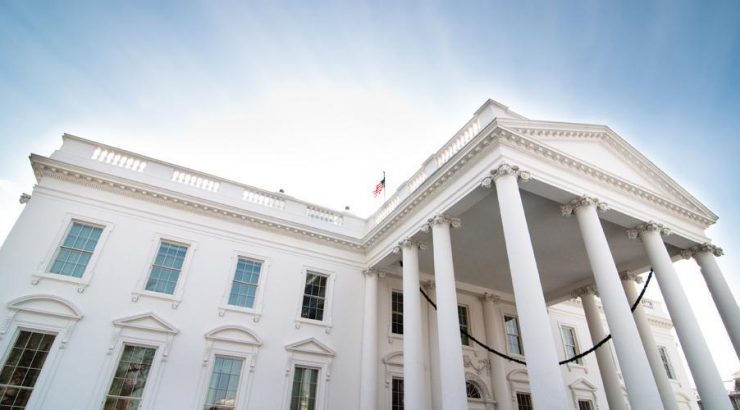
Faculty Books: The Administrative Presidency and the Environment A Book by Dr. David Shafie
June 10, 2020
 During the COVID-19 pandemic, people are seeing for the first-time what Los Angeles looks like without a thick shroud of smog. It was the voice of the people that prompted Congress to pass the strict pollution laws in the 1960’s that resulted in great environmental progress. Now, the power to influence environmental policy lies in the hands of the president. In his new book, The Administrative Presidency and the Environment: Policy Leadership and Retrenchment from Clinton to Trump, Dr. David Shafie (Political Science) examines how and why U.S. environmental policy making shifted from the legislative to the executive branch of government over the last 30 years.
During the COVID-19 pandemic, people are seeing for the first-time what Los Angeles looks like without a thick shroud of smog. It was the voice of the people that prompted Congress to pass the strict pollution laws in the 1960’s that resulted in great environmental progress. Now, the power to influence environmental policy lies in the hands of the president. In his new book, The Administrative Presidency and the Environment: Policy Leadership and Retrenchment from Clinton to Trump, Dr. David Shafie (Political Science) examines how and why U.S. environmental policy making shifted from the legislative to the executive branch of government over the last 30 years.
“Addressing environmental issues, not through the legislative process, but through the administrative process has all kinds of implications,” Shafie said. “When Congress makes laws there is a debate, there is a lot more scrutiny of what is going on, and there is more media coverage. Additionally, members of Congress are in communication with their constituents, so there is more chance for input and democratic deliberation.”
According to Shafie, the shift in policy making from Congress to the president began in the 1990’s.
“It became harder and harder for a polarized Congress to amend and update the major laws that were passed in the 1970’s and 1980’s,” he said. “Because there was not enough political consensus, the president was left to deal with new emerging problems such as climate change.”
In the three decades prior to this shift, the U.S. made significant environmental progress in response to the rise of air pollution and the discovery of unregulated toxic chemicals and pesticides. Critical laws included the Clean Air Act of 1963 and the Safe Drinking Water Act in 1974. The last major environmental law that Congress passed was the Clean Air Act of 1990. All major environmental initiatives since have come from the executive branch.
By using unilateral powers, Shafie said, the president can make changes to policy simply by changing the way existing laws are implemented.
“That is something a bureaucracy has the power to do,” said Shafie. “While a bureaucracy is supposed to be accountable to both branches of government, the president is the one naming the top administrators.”
When policy changes are made by political appointees, there is a lack of democratic process to ensure the changes are legitimate, Shafie explained.
Shafie gave one recent example of this kind executive action: President Donald Trump’s decision to withdraw the United States from the Paris Climate agreement. No country can legally leave this agreement until 2020, and they may not leave unless they have given a one-year notice. President Trump gave this notice in November of 2019.
“Our participation in the Paris Climate Agreement now depends on who wins the White House,” Shafie said.
This is not the first time President Trump has made such a decision, as he began making changes to the Clean Power Plan, a policy set in place by the Obama Administration, early in his presidency.
The problem, according to Shafie, with changing policy based on administrative ruling instead of law, is that it’s easier to rollback. That is exactly what president Trump did when he came into office by changing Obama-era regulations.
While the environmental impact of these decisions may not be seen in the U.S. directly, Shafie warns of other potential ramifications.
The impact of climate change has not yet been felt in rich, developed nations of the world, Shafie explained. But there are other nations who are already experiencing devastating natural disasters that they are ill equipped to handle.
“These disasters are fueled by climate change because they happen more frequently and are more intense,” Shafie said. “[The world’s poorest nations] are going to feel it if the Paris Agreement comes unraveled. They are already feeling it, but it will become more difficult to stabilize.”
Shafie asserts that significant changes can be made, providing Congress resume their former position as environmental law makers.
“If Congress were to return to the policy leadership that we had back in the 70’s and the 80’s, then I think we would see more effective and permanent solutions coming out of Washington [on climate change]”
Shafie also made it clear that the future of environmental policy in the U.S. is not entirely out of citizen’s hands.
“[Citizens] can communicate with their members of Congress and demand that they take action,” he said. “Unlike political appointees that run administrative agencies, Congress is directly accountable to their constituents. Rather than be cynical and throw up our hands and say that there is nothing we can do, we can act by pressuring our members of Congress.”

